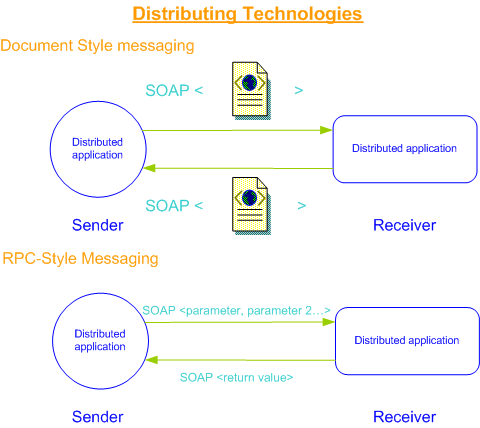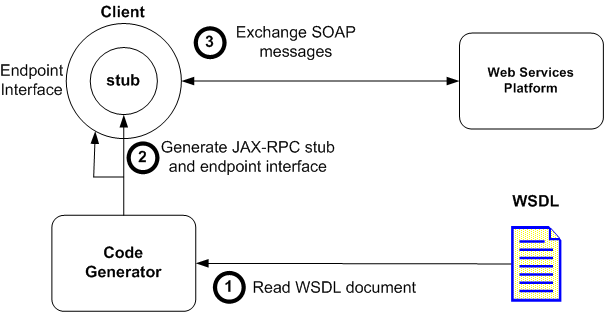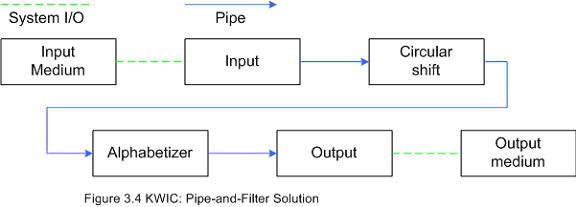Web Services has enabled a new generation of Internet based applications. These services support application to application internet communication. In other words applications at different network locations can be integrated to a function as if they were part of a single large software system via distributing technologies.
The Online Golf Handicapping system is an
example of an application made possible by Web services. This Web Services
includes an automated data collection system from the USGA (business
to business transaction) and vice versa [req-6], as well as allowing for
communication with non-browser desktop and handheld device access. This
allows a user to calculate their golf handicap as well
as retrieve previously stored information.
The basis of our Web Service will be
utilizing SOAP requests to retrieve the data from the USGA
interface. What is a SOAP message? It is a remote method
invocator that allows a distributed application (Online
Golf Handicapping server) to invoke a particular function on another
distributed application (USGA server) or even remotely [req-1]. In our case we will generate
a request to retrieve any changes or new updates from USGA server.

Part of our requirements within our
web service is to utilizes the "USGA.WSDL" that will generate stubbed out
code when used with a wizard tool (i.e. if we are
using java as our programming language of choice then we would use
castor). Once the stubbed out code is generated we can then
start invoking the USGA web service.

Our Web Service will invoke a request out to the USGA Web
Service nightly at a low peak time for the service. Once the data is retrieved
we are going to use the Pipe and filter approach via a singleton pattern.
Being that the data from USGA is being
streamed in and no user actions are required to complete this task a
pipe filter approach would be ideal. A [singleton] [2] design pattern will be used to update
course and handicapping algorithm. This will be implemented via a trigger
which is a procedure that is executed when a particular data activity
occurs. This in turn will fire a stored procedure that kicks off the
update.
Within the store procedure there will be some
algorithms for handicap differential [req-3]. It is computed from four
elements:
-
Adjusted gross score
-
USGA Course Rating
-
USGA Slope Rating
-
113 (the Slope Rating of a course of
standard difficulty).
To determine the
handicap differential, subtract the USGA Course Rating from the adjusted
gross score; multiply the difference by 113; then divide the resulting
number by the USGA Slope Rating. Round the final number to the nearest
tenth.
Handicap Differential = (Adjusted Gross Score
- USGA Course Rating) x 113 / USGA Slope Rating.
When the adjusted gross score is higher than
the USGA Course Rating, the handicap differential is a positive number.
Following is an example for determining a differential using an adjusted
gross score of 95 made on a course with a USGA Course Rating of 71.5 and a
USGA Slope Rating of 125:
|
Adjusted Gross Score -
USGA Course Rating:
|
|
95 - 71.5 = 23.5
|
|
Difference x Standard
Slope:
|
|
23.5 x 113 = 2655.5
|
|
Result / USGA Slope
Rating:
|
|
2655.5 / 125 = 21.24
|
|
Handicap Differential
(rounded):
|
|
21.2
|
When the adjusted gross score is
lower than the USGA Course Rating, the handicap differential is a negative
number. Following is an example for determining a differential using an
adjusted gross score of 69 made on a course with a USGA Course Rating of
71.5 and a USGA Slope Rating of 125:
|
Adjusted Gross Score -
USGA Course Rating:
|
|
69 - 71.5 = -2.5
|
|
Difference x Standard
Slope:
|
|
-2.5 x 113 = -282.5
|
|
Result / USGA Slope
Rating:
|
|
-282.5 / 125 = -2.26
|
|
Handicap Differential
(rounded):
|
|
-2.3
|
These
are a few algorithms you can find off the USGA Handicap rules
by the United States Golf Association (USGA).

In
the pipe-and-filter solution each component has a set of inputs and
outputs. A component, termed filter, reads input streams of data, applies
a local transformation and produces the output streams of data
incrementally. Each connector, termed pipes, serving as conduits for the
streams, transforms outputs of one filter to inputs of another.
-
Process
independence algorithm can be changed individually without affecting
others. As well as the data representation can be easily changed
individually.
-
Modification
on one module can be done without affecting others.
-
Any
two filters can be hooked together as long as the data that is being
transmitted between them had been agreed upon.
- High transparency overall input/output behavior of a system as a simple composition of the behavior of the individual filters.
II.
Disadvantages
-
Performance
hits with data
replication and space.
-
This
architecture is suitable for layered system.
-
It
dose not support interactive applications.
Design Rationale
This
architecture has quite a few advantages process independence algorithm can be
changed individually without affecting others [req-3]. As well as the data
representation can be easily changed individually. There is
high
transparency overall
input/output behavior of a system as a simple composition of the behavior
of the individual filters. Modification on one module can be done without
affecting others. Any two filters can be hooked together as long as the
data that is being transmitted between them had been agreed upon.
The pipe-and-filter guarantees
the delivery of information by the web service prior to processing any new transactions [req-1 ]. When using a
web service infrastructure we not only leverage the WSDL file from the
USGA service we can also generate our own WSDL file and schemas to
allow affiliated organizations to interact with our API [req-6]. Being able to
interact with the USGA services gives us the ability to register new users with them
[req-2].
Back to main page